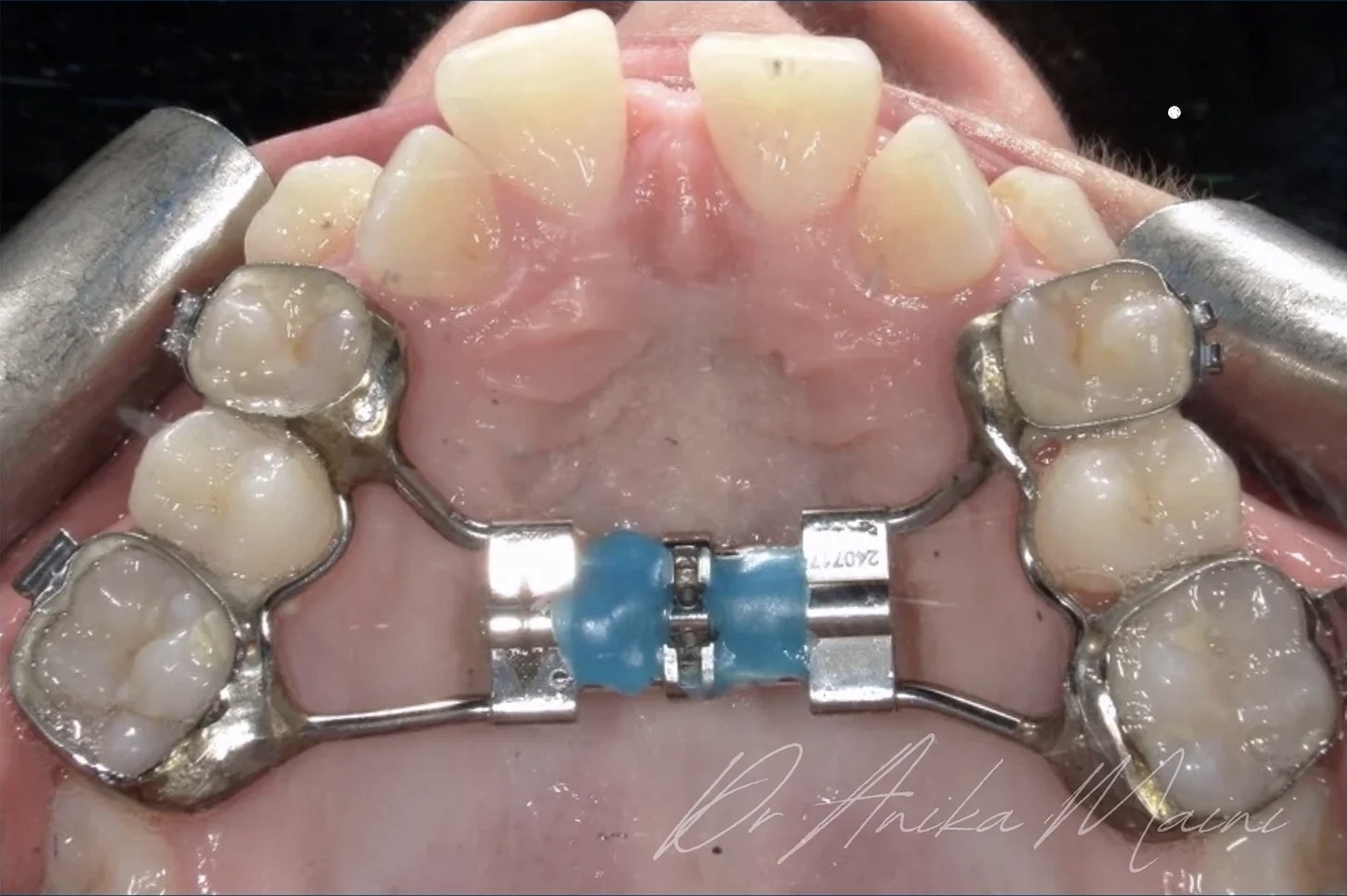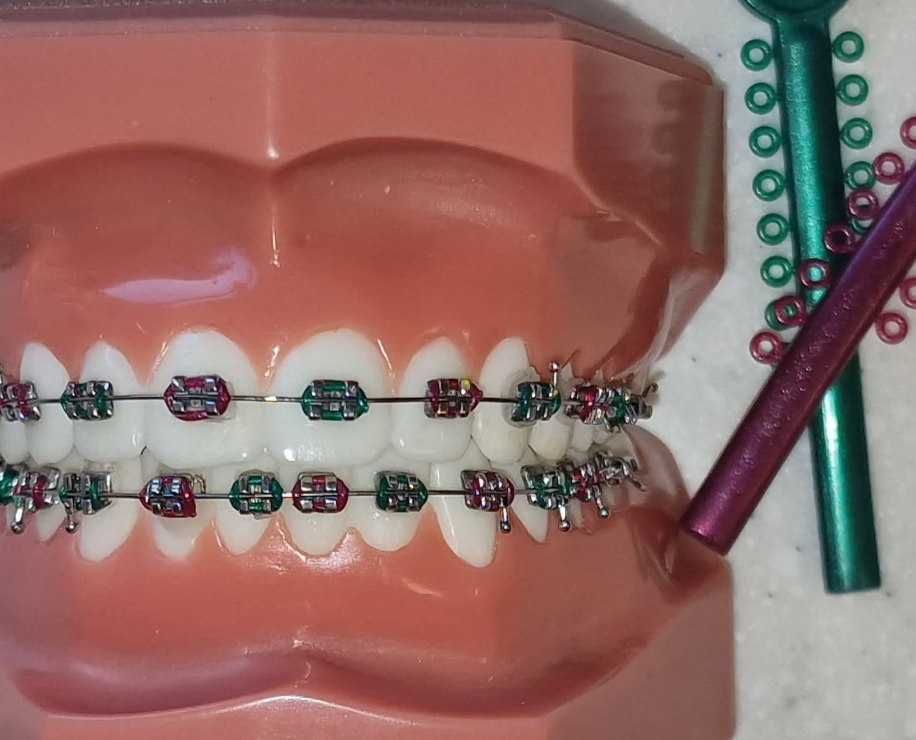What Is an RME?
An RME is an orthodontic appliance designed to widen the upper jaw (maxilla). It looks like a metal framework fitted to the upper teeth using metal brands with a screw in the middle. The patient (or parent) turns the screw using a special key, gently pushing the two halves of the upper jaw apart.
Why Widen the Jaw?
Some children and teens have a maxilla that’s too narrow, causing:
Crowded teeth – not enough room for permanent teeth to erupt.
Crossbites – the upper teeth bite inside the lower teeth.
Breathing issues – a narrow palate can affect nasal airflow.
By widening the jaw, orthodontists can improve bite alignment, create more room for teeth, and in some instances help with airway space.
How Does It Work?
The upper jaw’s growth plates aren’t fully fused in younger patients. The RME applies gentle, steady pressure to separate these plates, and new bone forms in the gap. This process usually takes a few weeks, but the appliance stays in for several months to stabilize the result.
What to Expect During Treatment
Initial feeling: Slight pressure in the teeth or nose after each turn of the key.
Appearance changes: A gap may appear between the front teeth, this is normal and temporary this usually closes within weeks when the screw has reached the optimal expansion.
Speech & eating: You might need a short adjustment period for speaking and chewing.
Cleaning: Good oral hygiene is crucial to prevent plaque build up around the appliance.
Who Benefits Most from RME?
Rapid maxillary expansion works best in children and young teens, before the mid palatal suture fuses (usually around ages 14–16). In adults, expansion often requires surgical assistance.
RME isn’t just about a wider smile, it’s about improved function, potential for better breathing, and a healthier bite. For many patients, it’s the first step toward a beautiful, well-aligned smile.













